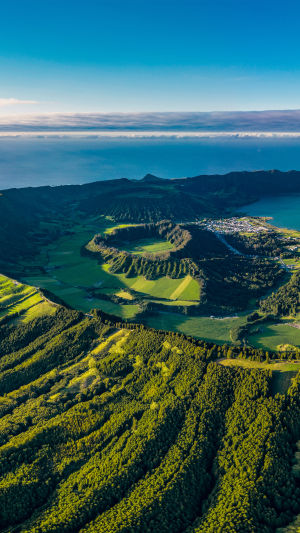The Azores Islands are located in the eastern central part of the North Atlantic Ocean, stretching over 640 kilometres and consisting of nine volcanic islands.
It is a territory of the Portuguese Republic and is well connected by air to the capital Lisbon, from where it takes about two and a half hours to fly to the Azores. Discovered by Portuguese navigators in the 15th century, the Azores have long been an important supply point for the Atlantic route.
Today, it is a vacation destination with a total of approximately 250,000 permanent residents.
The Azores have a subtropical climate with high humidity. A rich variety of European and Mediterranean plants can be found, and mixed forests still cover many of the island's slopes today.
Intensive agriculture produces cereals (wheat and corn), vegetables, and fruits (including pineapples and grapes).
The Azores is made up of nine different islands, each one offering you a surprise.
You can indulge in the endless charms of the Azores.
In the Azores, you can see dolphins and sharks playing in the sea. The volcanic terrain is covered with green vegetation. There are lilac-coloured pachysandra flowers that dazzle the eyes, blue-green lakes, and the eruptions of dormant volcanoes.
Inland, you can climb mountains, walk in the countryside, or stay on the coast and dive or swim.
On these amazing islands, you will not feel the passage of time, everything seems to stand still.
All the islands here have something to offer. Pico Island, for example, is listed as a World Heritage Site. There are amazing mountains, dramatic cliffs, and vineyards made of black basalt.
The largest of these islands is São Miguel, with Ponta Delgada as its capital. São Miguel is a volcanic island, with a volcano under the sea that erupted in 1957, but the land part is safe and has little seismic activity to worry about.
Although it is the largest island, it takes only half an hour to drive across the island, and it is within a two-hour drive to any place on the island.
Also, because of the rich fisheries around the island, whales and dolphins are attracted to feed, creating one of the best whale-watching spots in the world.
Because of the abundance of local geothermal energy, you can use geothermal heat to cook vegetables. Put rice, sausage, or vegetables mixed with seasoning into a wooden drum with holes put it in a small hole that bubbles geothermal heat at the surface of the ground, and steam it with a steam tank for several hours continuously without interruption to get a delicious thing.
Many travellers come here for this lava barbecue reputation, which is very famous for its roasted chicken.





